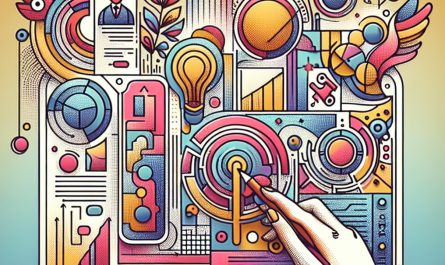How design thinking navigates modern product design strategies
UXDG: It’s a pleasure to have you on board our 2nd annual UXDG Design Summit. What motivates you to join the summit and what are your expectations?
Gavin: I’d heard great things about the UX360 research conference from my amazing colleague Nyssa Packard, Head of Insights at Skyscanner, so was well primed. It’s so great to see a roster of speakers who are on the bleeding edge of design at tech’s leading companies. I’m personally excited to hear from them.
UXDG: How has Design Leadership changed today?
 Gavin: For me, it’s now about establishing stable, sustainable, and scalable practices that don’t rely on hierarchy but work with light touch guided autonomy. It’s key we also ensure that as designers become team leads and managers that they still retain strong authorship of design direction for their team. For too long design managers have acted as facilitators only. It’s key that junior designers see design demonstrated by their managers, and it’s much better for the product if the most experienced ‘hands’ are still at work in design practice, on at least a gestural level.
Gavin: For me, it’s now about establishing stable, sustainable, and scalable practices that don’t rely on hierarchy but work with light touch guided autonomy. It’s key we also ensure that as designers become team leads and managers that they still retain strong authorship of design direction for their team. For too long design managers have acted as facilitators only. It’s key that junior designers see design demonstrated by their managers, and it’s much better for the product if the most experienced ‘hands’ are still at work in design practice, on at least a gestural level.
UXDG: What does design leadership mean to you and what role does design play in strategy and business?
Gavin: It means establishing experience strategy as distinct from product strategy. For me, strategy is clarity about what the product will be like in future as well as a plan to get there from a design POV. We then need to inspire and guide our teams to achieve that vision. The experience strategy takes the product strategy, user insights and brand strategy as inputs and imagines what the seamless user experience needs to be to achieve those goals.
UXDG: Without giving too much away – what is the core message of your talk and what would you like our delegates to remember?
Gavin: My core message is that design must finally ditch the jargon of ‘UX, ID, UI’ etc and explain our focus simply in lay terms to genuinely gain the support of our cross-discipline colleagues that we need to succeed. Everything else stems from making our practice more relatable.
UXDG: Design Thinking has been fading away in some schools of thought and newer methods are being practiced. What are your views and are agile methods still relevant?
 Gavin: Design Thinking in essence is a problem-solving process that frames problems with a human focus, applies divergent creativity, and then tests to learn. Given this, I think it will remain important. Some people may think of Design Thinking as a set of workshops, but this is just one manifestation. In practice I see Agile as an execution methodology, rather than a problem-solving process such as Design Thinking. These are different things. You can do Design Thinking within the Agile process but in practice this often leads to constraining design output to a tactical level. Both are important approaches that can complement each other if used wisely at different phases of the product development cycle.
Gavin: Design Thinking in essence is a problem-solving process that frames problems with a human focus, applies divergent creativity, and then tests to learn. Given this, I think it will remain important. Some people may think of Design Thinking as a set of workshops, but this is just one manifestation. In practice I see Agile as an execution methodology, rather than a problem-solving process such as Design Thinking. These are different things. You can do Design Thinking within the Agile process but in practice this often leads to constraining design output to a tactical level. Both are important approaches that can complement each other if used wisely at different phases of the product development cycle.
UXDG: Where is UX & Product Design headed? How does the future of the discipline look like?
Gavin: In terms of practice for me, I think there will continue to be less and less ‘pure’ managers and more managers as authors of experience strategy as the hands-on element of their role. For designers there’ll be continuing need for hybrid skill set, a need to dig deeper for intentional creativity in design thinking, and more quant experimentation muscle.
Obviously, AI, Augmented Reality and Virtual Reality will have an impact on the future of the hands-on design craft as those technologies proliferate. But for most designers outside these spaces the trend of design systems increasingly componentizing user interface will continue until design system designers have full control of the user interface styling without going through front-end engineers.
Then rather than spending time designing user interface components, designers will be mainly focused on collaborating with our cross-discipline colleagues on solving user problems and using that design system to create user interface at speed to test and learn with design driving more quant experimentation. We’ll also see an increased focus on more rarefied stylistic features that become iconic for brands and have a positive impact on user trust. So, in summary, we’ll see a shift away from day-to-day interface design to other parts of the design skills spectrum and companies increasingly leveraging design’s strategic potential over time.










 by
by 


